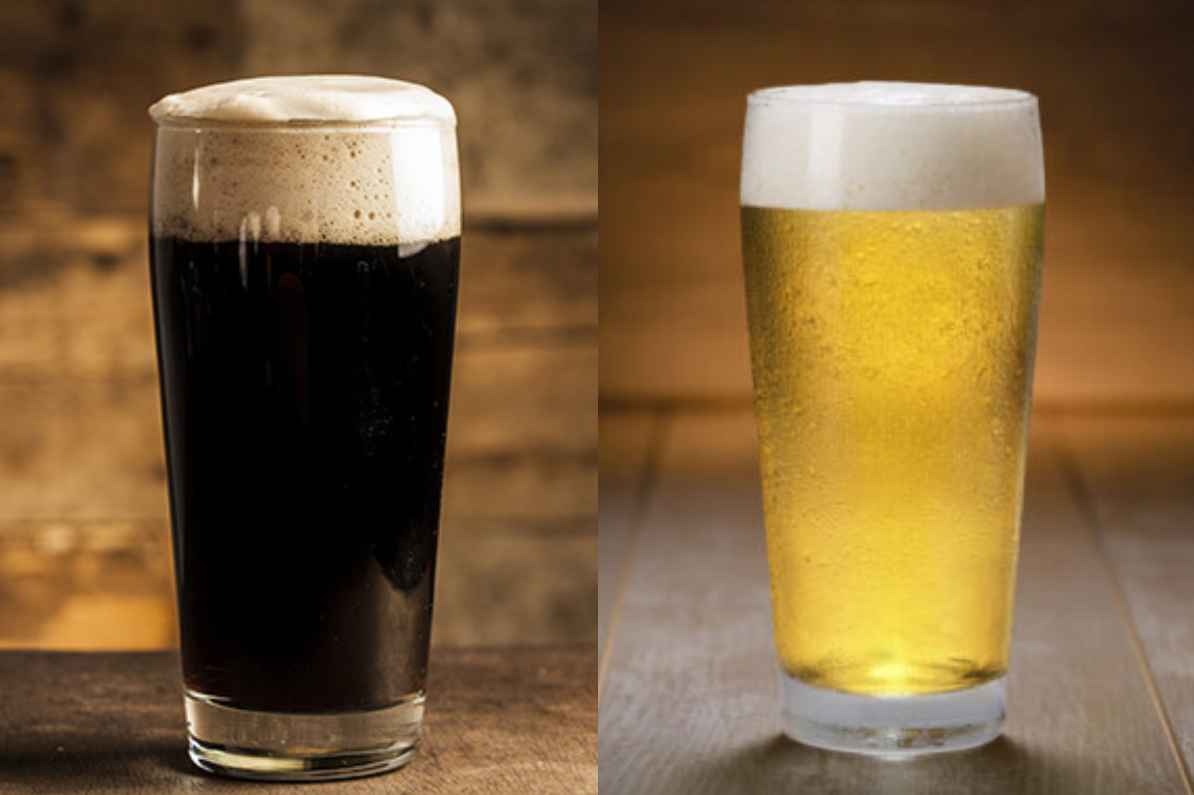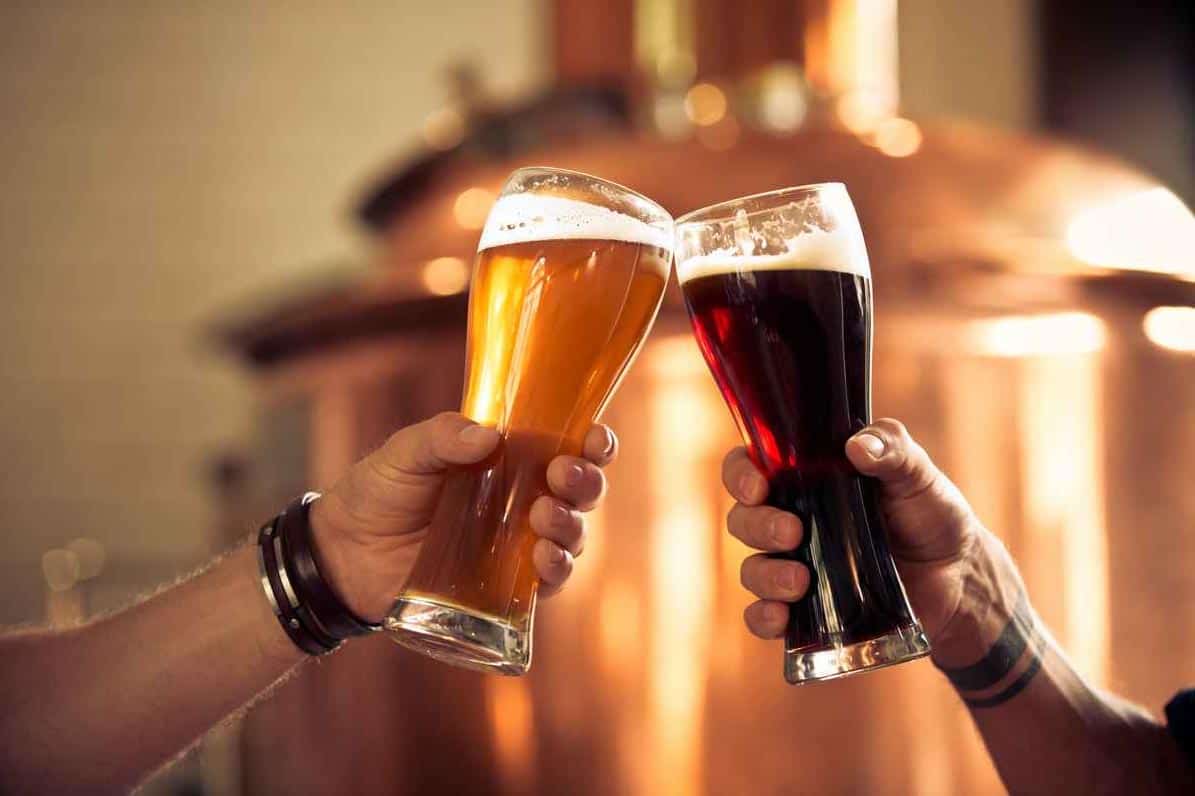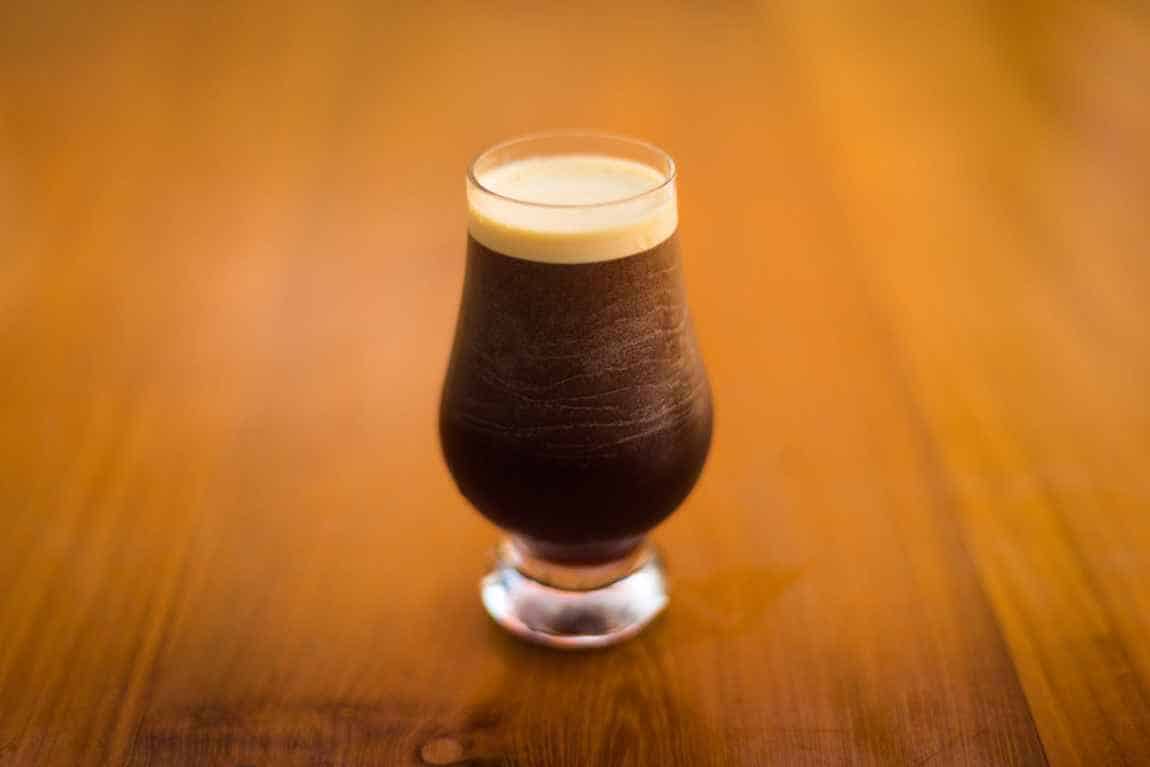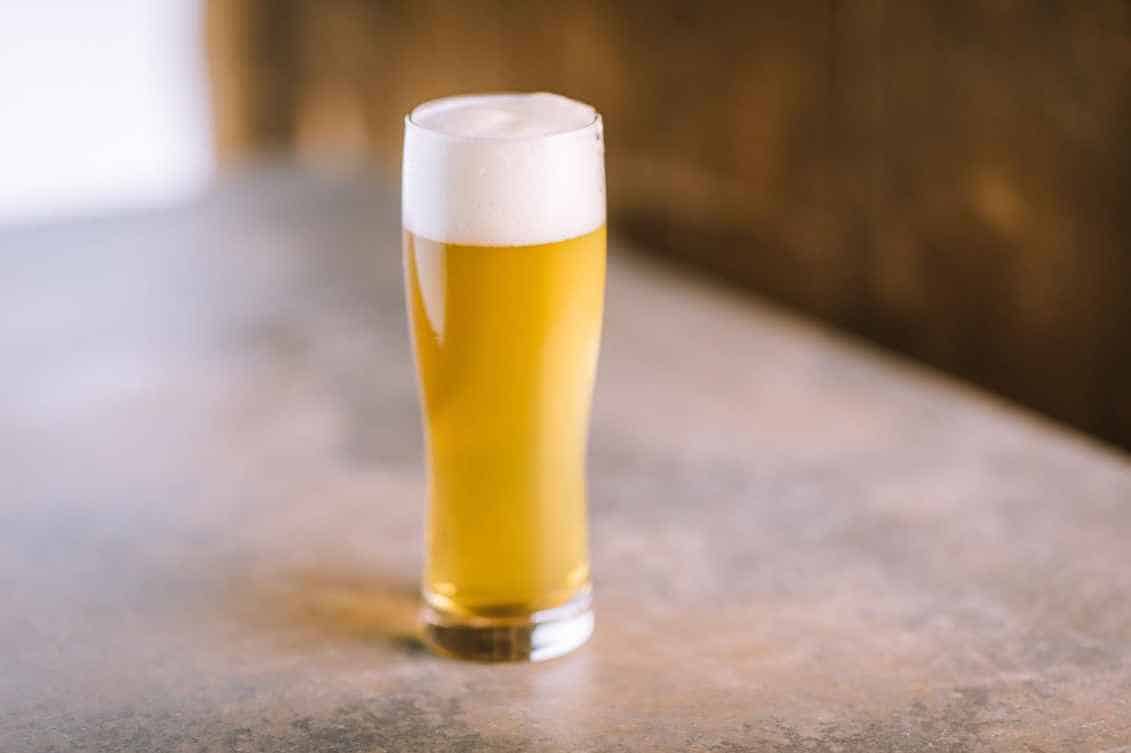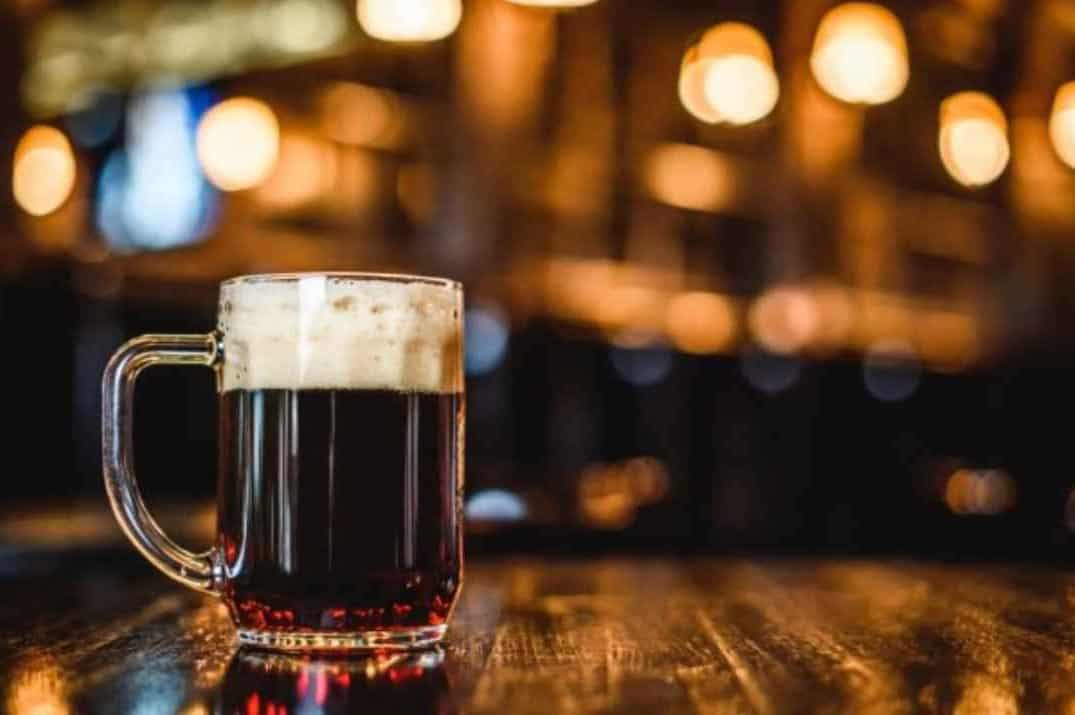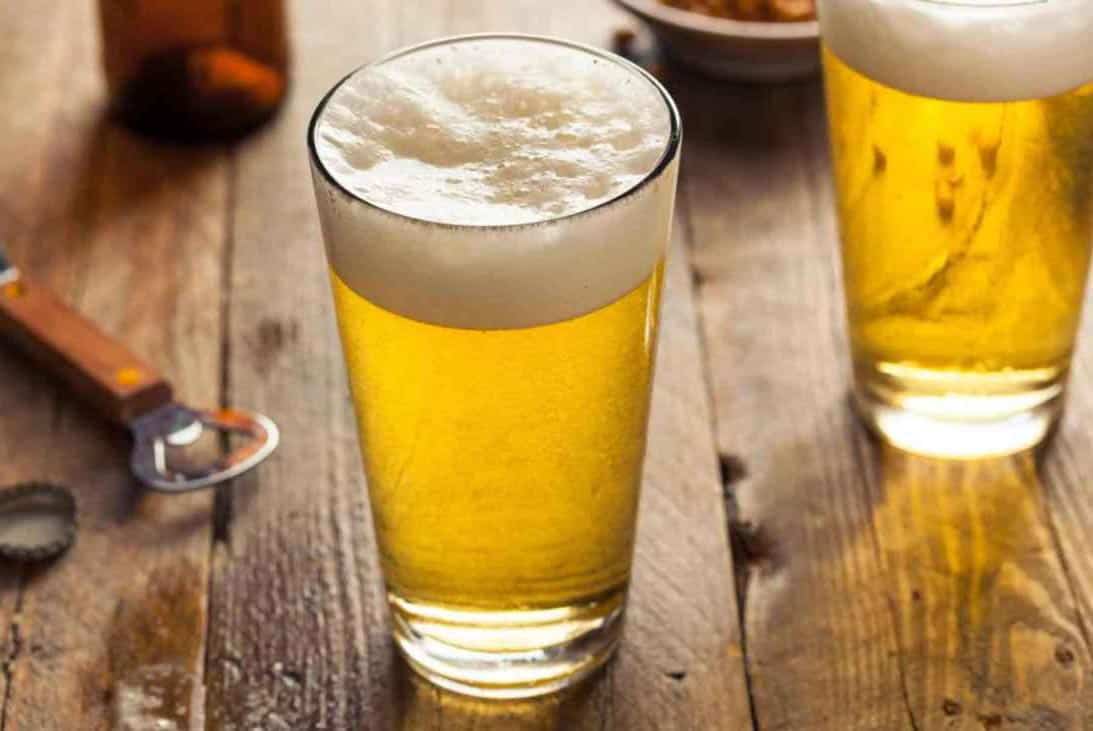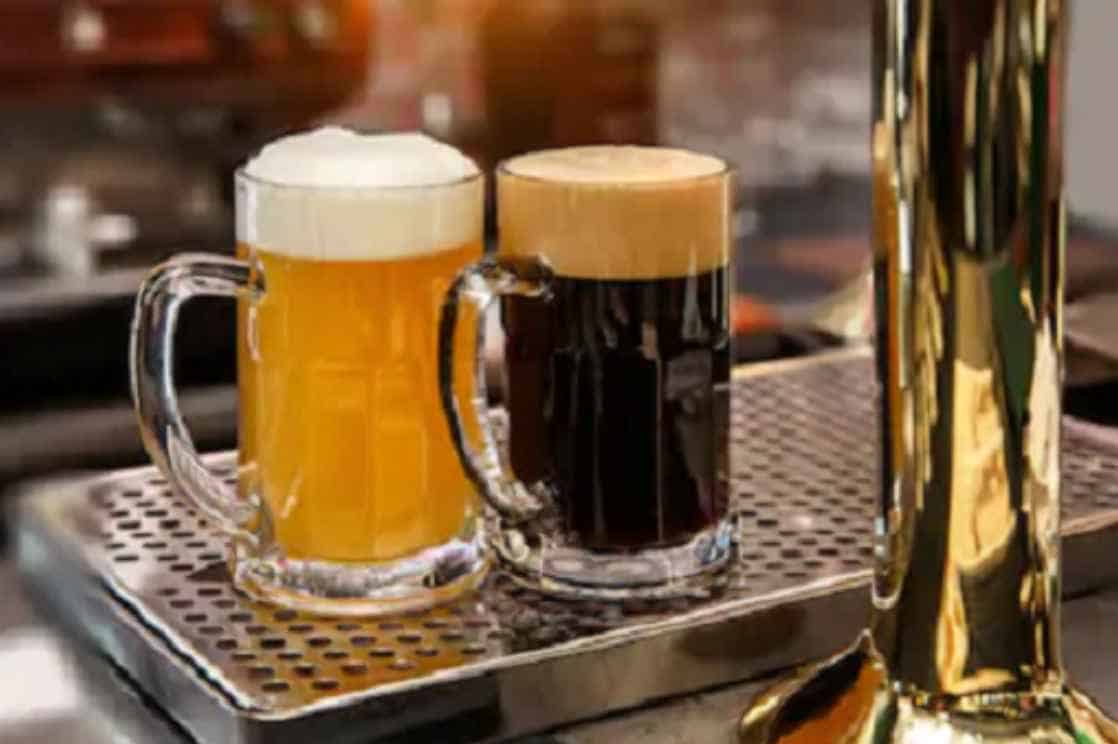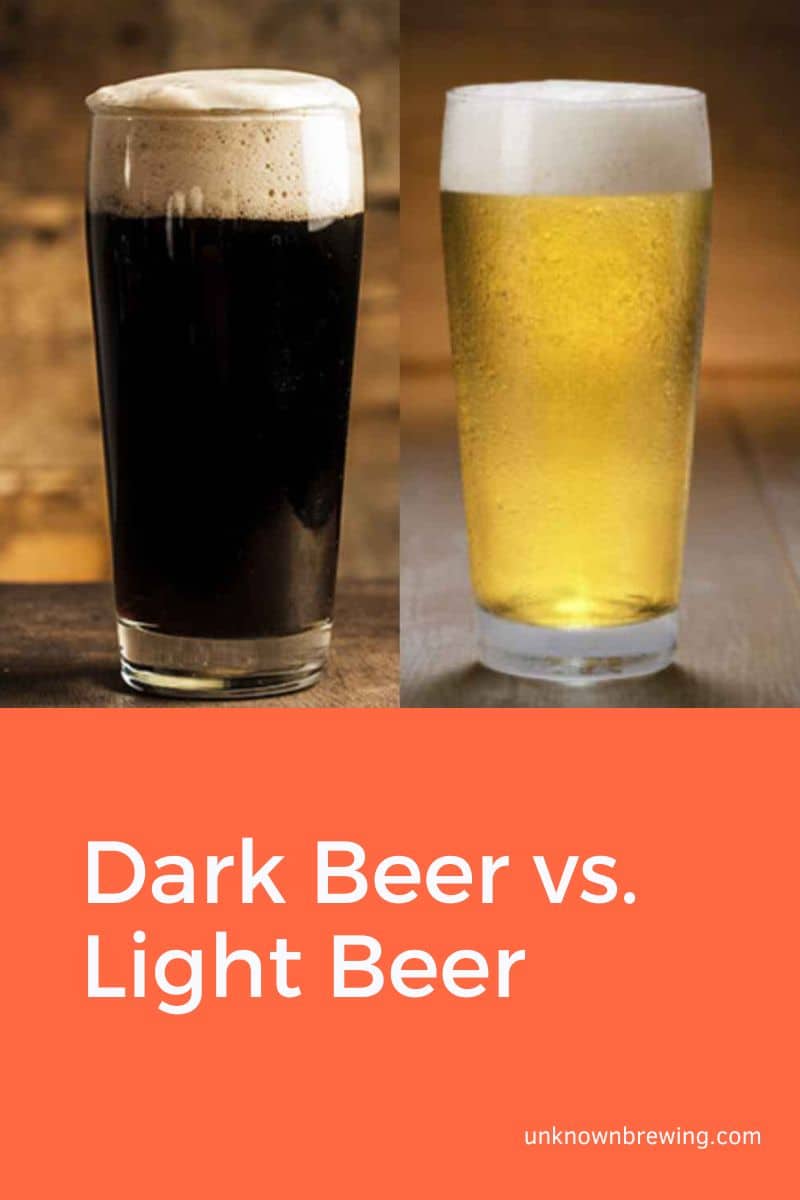You’re maybe new to the world of beer, or you’re maybe drinking beer for how many years; we can all say that there is plenty of beer types when it comes to beer drinking–from pale ales, stouts, amber ales, IPas, and so forth.
However, beer lovers indeed have preferences for beer varieties, colors, and tastes. Moreover, you can differentiate beers, whether they are dark or light, based on their alcohol content, ingredients, and aromas.
When it comes to beer, there are plenty of types to differentiate. But in this blog, we will tell you the two distinct types of beer, which are dark beer and light beer key differences. These two types of beer differ in many aspects, such as appearance, flavor, alcohol content, and brewing process.
Dark Beer vs. Light Beer (Side-by-side differences)
Whether you’re craving the full-bodied richness of a robust brew or the light and crisp flavor of a refreshing pint, it’s vital to comprehend the distinctions between these two beer types.
Armed with this knowledge, you can make an informed and confident choice on which one to select for your next satisfying sip, ensuring that every mouthful is a true delight to the senses!
| Characteristics | Dark Beer | Light Beer |
| Color | Dark brown to black | Pale yellow to light gold |
| Flavor | Rich, full-bodied, with solid malt and roasted flavors | Mild, crisp, and refreshing |
| Alcohol Content | Typically higher, ranging from 4-10% ABV | Typically lower, ranging from 2.5-5% ABV |
| Calories | Generally, more calorie-dense due to higher alcohol content and more decadent flavors | Basically, lower in calories due to lower alcohol content and milder flavors |
| Brewing Process | Uses darker malts, longer roasting times, and often additional ingredients like chocolate or coffee | Uses lighter malts and fewer roasted grains, with the goal of reducing alcohol and calorie content |
Dark Beer vs. Light Beer
Dark beer and light beer are some of the most known types of beer. The most distinctive and noticeable difference you’ll notice between the two is their colors–which we will discuss later. Of course, people have their particular kind of preferences. Different people like different things–which is also true when it comes to choices of beer.
What is Dark Beer?
The stereotypical key feature you’ll notice when it comes to dark beer is that it naturally has a darker color, contrary to other beers.
Due to the dark and roasted malts used in its brewing process, these malts are baked for a longer time than other beers–which causes their richer flavor and darker color.
The color of this type of beer starts from reddish-brown to deep black, and regardless of its color, the flavors of dark beers offer widely.
You can taste different classifications of flavors, such as chocolate, nuts, and caramel. Some examples of dark beers are porters, brown ales, stouts, and Belgian Dubbels.
It is also important to remember that dark beers are predominantly brewed with a higher alcohol content than light beers–but that is not often the case. You can pair dark beers with wide-ranging foods such as hearty dishes, strong cheeses, roasted meats, and stews.
What is Light Beer?
Moving on to light beer–a brew characterized by lower alcohol content and fewer calories than its darker counterparts and features a light, pale yellow color, and a refreshing taste.
Brewers typically concoct light beers by blending ingredients such as malted grains, hops, water, rice, and barley. Moreover, in order to construct light beer, the brewing process focuses on decreasing both the beer’s alcohol content and calorie count.
So to achieve this goal, breweries use fewer malted grains, which contain sugars that can be transformed into alcohol during the brewing process, and increase the proportion of corn or rice in the recipe.
The alcohol content of light beer is also carefully controlled, resulting in a light-bodied beer with a clean, crisp taste that is easy to drink.
Overall, light beer is the top-rated drink for those seeking a refreshing, low-calorie beverage that can be enjoyed in a variety of settings.
Color Difference Between Dark Beer and Light Beer
As we have stated above, the apparent difference between dark beer and light beer is its visual representation–the color. Meaning to say, the colors of dark and light beers differ from each other just by glancing at a particular beer.
Ultimately, the beer colors depend on different factors, such as the roasting process, fermentation process, and the grain used for a specific beer.
Therefore, you can see the color differences between these two once you compare them side by side.
Dark Beer Color
Dark beer’s color is one of the most prominent characteristics you can notice compared to other types of beer. Although the color of beer varies depending on its style, the color of dark beers usually ranges from a deep reddish-brown to black.
Relating to the appearance of dark beers, some may be opaque, while some may be slightly translucent. Of course, as we have stated before, it is because of the brewing process, the grains used, and as well as the filtering methods.
The color of dark beer may be a visual characteristic; it can also be a visual indicator of the beer’s flavor. For example, if the beer has darker hues, it only means that it is more complex and has an intense flavor mainly composed of coffee, caramel, chocolate, or nuts.
Light Beer Color
Moving on to the color of light beer, the most common color of this beer ranges from pale, straw-like yellow to a slightly darker golden hue. It is evident that the brewing process for this type of beer highly affects its color.
On the other hand, some light beers have a slightly hazy appearance, wherein the presence of proteins and other compounds of beer are found. And oftentimes, the color of the light beer is associated with a lighter-bodied and milder flavor profile making this beer a trendy choice of drink.
Since light beer is a lighter-bodied beer, it is considerably associated with mass-produced commercial brands, and it helps many breweries on developing and create their own styles–thanks to this light beer!
Brewing Process of the two (Dark Beer and Light Beer)
Moving on to the brewing process of these two, we will now tell you if there are any differences in the brewing process between dark and light beers. Let’s proceed!
Brewing Process of Dark Beer
- Once the grains are milled, they are soaked in hot water in a process called mashing.
- During this mashing process, the enzymes break down the starches into sugar, which will be fermented into alcohol later on.
- You should boil the liquid, now called wort, with hops to add bitterness and balance the sweetness of the malt. One key factor that you should remember is that the length and intensity of the boiling process can significantly affect the final color and flavor of the beer.
- Once done boiling and the wort has already cooled down, add yeast so that the fermentation will begin–with this process, the sugars will be converted into alcohol and carbon dioxide.
- The beer must be conditioned to age well for about several weeks or more so that the flavors will develop. Once the conditioning is done, you can now enjoy a sip of your beer!
Brewing Process of Light Beer
- Begin by mixing the selected grains with hot water after you have made your choices.
- Combining light and dark malts is usually the method used to produce light beer with a gentler flavor.
- It’s crucial to keep a close eye on the alcohol and calorie content throughout the brewing process to maintain a low figure.
- In case the alcohol and calorie content are still too high, adding ingredients like corn or rice can help further reduce them. Therefore, it is critical to keep checking them periodically.
- Following the boiling process, ferment the wort using yeast and let it sit for a few days or weeks, depending on the kind of beer being made.
- Finally, when fermentation is completed, transfer the beer into a bottle or keg for consumption, and voila! You may now enjoy your drink!
Alcohol Content of Dark Beer and Light Beer
Behold, we have crafted a table showcasing the typical alcohol contents of dark beer as opposed to light beer. However, let it be known that these are just estimations and the precise values may differ depending on the unique brewing methodologies employed by each beer variant.
So if you’re seeking enlightenment on the ABV of your beer of choice, whether it be light, dark, or high or low in alcohol, then gaze upon this table which features some of the most popular beer types around!
| Beer Name | Type | Alcohol Content |
| Guinness | Dark Beer | 4.2% ABV |
| Porter | Dark Beer | 6.0% ABV |
| Stout | Dark Beer | 7.0% ABV |
| Coors Light | Light Beer | 4.2% ABV |
| Bud Light | Light Beer | 4.2% ABV |
| Corona Light | Light Beer | 4.1% ABV |
List of Foods That Suit Them Best
Dark beer and light beer both have different flavor profiles; therefore, they are more likely to pair with distinct types of food. When it comes to dark beers, they are mostly best to pair with grilled meats, roasted vegetables, stews, and chocolate desserts.
While on the contrary to light beers, they pair the best with foods such as salads, chicken dishes, spicy dishes, seafood, and barbecue. Below is our example of food pairings that you should give a try when you’re drinking dark beer or light beer!
Dark beer
- Grilled steak
- Beef stew
- Roasted vegetables
- Chocolate cake or brownies
- Firm cheeses, such as blue cheese or sharp cheddar
Light beer
- Grilled fish or shrimp
- Caesar salad
- Grilled chicken or turkey burgers
- Spicy foods, such as Mexican or Thai cuisine
- Barbecue or grilled meats
Final Thoughts
Let’s end the discussion between dark beer vs. light beer and uncover what’s beyond the surface. It’s apparent that they are two entirely different beverages.
However, delve into the world of beer brewing, and uncover the perfect pint that will stimulate your taste buds like never before.
The possibilities are endless, and the journey is yours to take!

Sandra B. King is a wife and mother of two. The marketing genius is also a beer enthusiast. Even though she doesn’t brew beers, she can whip up a mean content marketing strategy.
